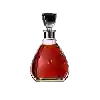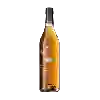
Winery Abbe RousBanyuls Vermeil
This wine generally goes well with beef, lamb or mature and hard cheese.
Food and wine pairings with Banyuls Vermeil
Pairings that work perfectly with Banyuls Vermeil
Original food and wine pairings with Banyuls Vermeil
The Banyuls Vermeil of Winery Abbe Rous matches generally quite well with dishes of beef, lamb or spicy food such as recipes of beef tongue in hot pickle sauce, pizza queen with merguez or chicken wrap.
Details and technical informations about Winery Abbe Rous's Banyuls Vermeil.
Discover the grape variety: Verdeca
An ancient indigenous grape variety known mainly in southern, eastern and central Italy. It can be found in Austria, Switzerland, Greece, the United States, Brazil, etc. and is virtually unknown in France. Note that it is sometimes confused with Verdea.
Informations about the Winery Abbe Rous
The Winery Abbe Rous is one of of the world's great estates. It offers 50 wines for sale in the of Banyuls to come and discover on site or to buy online.
The wine region of Banyuls
Banyuls wines come from the South-eastern Part of Roussillon, in the south of France, in the lower Pyrenees, a few kilometres from the Spanish border. These naturally Sweet wines are consumed both as an aperitif and as a dessert. They come in a wide range of hues, from GoldenGreen (Banyuls Blanc) to Amber (Banyuls Ambré) to the intense garnet of the standard Banyuls Rouge. Unusually among the natural sweet wines of France, all Banyuls wines are made primarily from Grenache grapes of various colors.
The wine region of Languedoc-Roussillon
Languedoc (formerly Coteaux du Languedoc) is a key appellation used in the Languedoc-Roussillon wine region of southern France. It covers Dry table wines of all three colors (red, white and rosé) from the entire region, but leaves Sweet and Sparkling wines to other more specialized appellations. About 75% of all Languedoc wines are red, with the remaining 25% split roughly down the middle between whites and rosés. The appellation covers most of the Languedoc region and almost a third of all the vineyards in France.
The word of the wine: Removal of shoes
In the spring, this operation consists of removing the mound of earth formed at the foot of the vines by ploughing between the rows in the autumn.














